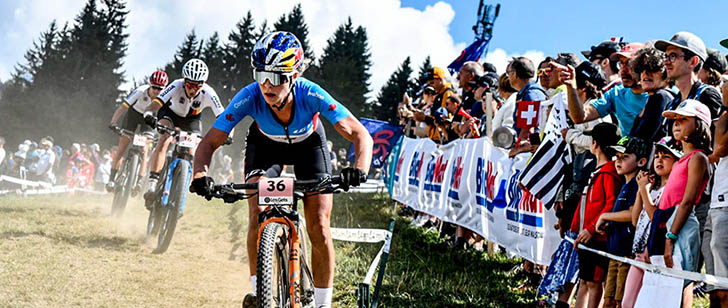September 20/10 19:15 pm - WADA Executive Committee Approves 2011 Prohibited List
Posted by Editor on 09/20/10
On September 18th, WADA's Executive Committee approved the List of Prohibited Substances and Methods (List) for 2011.
The Prohibited List is one of the cornerstones of the harmonized fight against doping. It specifies substances and methods prohibited in sport. Its implementation is mandatory for organizations that have adopted the World Anti-Doping Code.
The annual revision of the List is a consultative process facilitated by WADA, beginning with the circulation of a draft List among stakeholders. Comments received are considered by WADA's List Expert Group, which then presents its conclusions to WADA's Health, Medical and Research Committee. The latter in turn submits its final recommendations to the Executive Committee, which discusses the recommendations and makes a final decision at its September meeting.
"Thanks to the input from international scientific experts and stakeholders, the 2011 List once again reflects the latest scientific advances and broad consensus in the anti-doping community," said WADA's President John Fahey. "As in previous years, changes are founded on expanding anti-doping knowledge, evidence from the field, and constantly growing understanding of doping practices and trends. This is a dynamic and successful process. As the facilitator of this process, WADA thanks all those who have contributed by providing expertise and feedback."
New Section for Non-Approved Substances
The 2011 List offers a number of changes compared to the 2010 List. In particular, a new section - "Non-Approved Substances" - has been added. This "open" section addresses the issue of the abuse of pharmacological substances for the purpose of performance enhancement that are not included in other sections of the List and that are not approved by any governmental regulatory health authority for human therapeutic use (i.e., drugs under pre-clinical or clinical development or discontinued). These substances will be prohibited at all times (in- and out-of-competition).
In addition, platelet-derived preparations (commonly referred as PRP), which are currently prohibited when used by intra-muscular route, have been removed from the 2011 List after consideration of the lack of current evidence concerning the use of these methods for purposes of performance enhancement. Current studies on platelet-derived preparations do not demonstrate potential for performance enhancement beyond a potential therapeutic effect. WADA will however continue to closely monitor developments of these preparations.
Declaration of Use
Another noteworthy amendment is the removal of the obligation for athletes to file a Declaration of Use for specific substances that are not prohibited.
Declarations of Use, which must be distinguished from Therapeutic Use Exemptions (allowing the use of a prohibited substance), are currently required for salbutamol and salmeterol by inhalation; glucocorticosteroids administered by intra-articular, periarticular, peritendinous, epidural, intradermal and inhalation routes; as well as platelet-derived preparations that are not administered by intramuscular route.
Failure by an athlete to file a Declaration of Use does not currently result in an allegation of an anti-doping rule violation. This administrative requirement was therefore removed.
New Scientific Research Projects
As is traditionally the case at its September meeting, the Executive Committee approved scientific research projects for funding.
Eighty-two research proposals were received this year from 24 countries from all five continents, with 34 being selected by WADA's Scientific Committees and Executive Committee for a total funding of close to US$4.6 million. This will bring WADA's total commitment to scientific research grants to more than US$54 million since 2001.
These projects will help advance anti-doping research in such areas as gene doping, steroid profiling, blood manipulations, the detection and identification of novel doping trends, and the implementation of further means for detecting a number of substances and methods currently abused by athletes or potentially interesting to cheaters. Project descriptions will be posted on WADA’s Web site once the contracts have been signed.
"Scientific research is a key area of the progress in the fight against doping in sport," said John Fahey. "WADA strives to continuously enhance existing detection means and anticipate doping trends. The recent breakthroughs announced by WADA-funded research teams in relation to gene doping detection are good examples of the importance of having a global, coordinated research program in place. WADA will continue to commit significant resources towards research and to closely cooperate with external scientists, the pharmaceutical and biotechnological industries, as well as drug agencies and evaluation bodies, in order to further advance anti-doping science."
Athlete Whereabouts
During the meeting, Executive Committee Members reviewed an Introductory Note on Athlete Whereabouts Requirements. This document, accessible here, was developed by WADA to assist anti-doping organizations in developing and operating equitable and appropriate whereabouts and testing programs.
Over the past few months, WADA has conducted a review of the practical implementation of athlete whereabouts requirements by International Federations (IFs) and National Anti-Doping Organizations (NADOs) to assess how World Anti-Doping Code signatories have enforced whereabouts requirements under the Code and how they have exercised their discretion in the management of Registered Testing Pools.
Results of a survey circulated to anti-doping organizations by WADA earlier this year showed that Code signatories overwhelmingly support the principle of whereabouts and reported successful implementation of the rules. However, the survey also indicated that there is still some misunderstanding from a number of anti-doping organizations as to the purpose of whereabouts requirements.
The Introductory Note helps further clarify the rationale for collecting athlete whereabouts information and assists anti-doping organizations in the practical implementation of the requirements. In addition, WADA will continue to consult with athletes and Code signatories and will present potential recommendations for practical improvements on how whereabouts requirements are applied on an ongoing basis at the November meetings of WADA's Executive Committee and Foundation Board.
| Return to Canadian Cyclist homepage | Back to Top |





